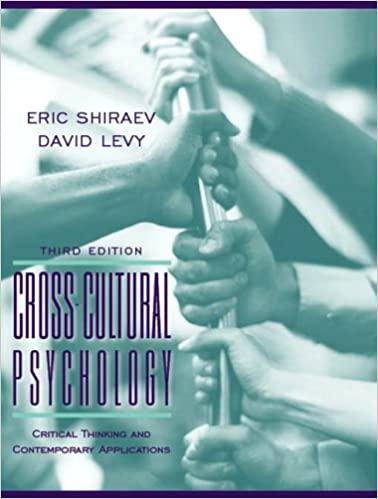Question
Ibrahim, a 33-year-old single man, claims to have a persistently sad mood after ending a six-month romantic relationship. Ibrahim claims to be filled with a
Ibrahim, a 33-year-old single man, claims to have a persistently sad mood after ending a six-month romantic relationship. Ibrahim claims to be filled with a sense of "emptiness" and is certain he will remain alone forever. Despite denying ever having attempted suicide, he also claims to have gone in and out of psychosocial treatment for suicidal ideation. Additionally, he denies engaging in non-suicidal self-destructive conduct.
Ibrahim admits that he has a lot of trouble controlling his powerful emotions and is aware that people would call him "moody." He is also aware of his tendency to react inappropriately and/or intensely to even little wrongdoings, which can lead to emotions of regret and embarrassment. Both platonic and romantic connections with him are challenging to maintain because of his rage. Ibrahim frequently calls in desperation to check on people's feelings for him in order to get reassurance from them in order to cope, and he drinks too much (i.e., six or more drinks per sitting). Ibrahim has called in ill to work a few times recently to recover from drinking the previous night due to the intensity and frequency of his drinking in recent weeks. Ibrahim is looking for a medication to assist him control or regulate his eating.
Case study analysis. Use only your textbook to help answer these questions: Paragraphs and full sentences required. No point-form.
- Outline their symptoms and make an educated guess on their diagnosis.
- Using the DSM criteria, describe in detail how this person fits the criteria for diagnosis.
- What are some of the factors that could have contributed to their mental illness (biology, cognition, and social/systemic factors all contribute to the development of a mental health disorder)?
- What are some possible early warning signs?
- Biologically, what is going on in the brain and body?
- Is it likely that family members also experience this disorder?
- Describe in detail the empirically valid treatments for this disorder. Will this disorder be a chronic condition and why?
- What is the impact on his/her life?
- What role do cultural factors play in the diagnosis, treatment and stigma of this disorder?
Step by Step Solution
There are 3 Steps involved in it
Step: 1

Get Instant Access to Expert-Tailored Solutions
See step-by-step solutions with expert insights and AI powered tools for academic success
Step: 2

Step: 3

Ace Your Homework with AI
Get the answers you need in no time with our AI-driven, step-by-step assistance
Get Started


